April Gardening Tips and To Dos in the Pacific Northwest
Are you having trouble figuring out what needs to be done in the garden now that spring has finally arrived? The garden needs a lot of love, and there’s so much to do to prepare for this year’s growing season. Today I’m sharing my April gardening tips and to-dos for your Pacific Northwest garden.
I can’t tell you how happy I am that Spring is finally here! I’m looking forward to spending time in the garden and my greenhouse this month.
April showers bring May flowers, especially in the Pacific Northwest, so put on your raincoat and head outside because April is one of the busiest months of the year for gardening.
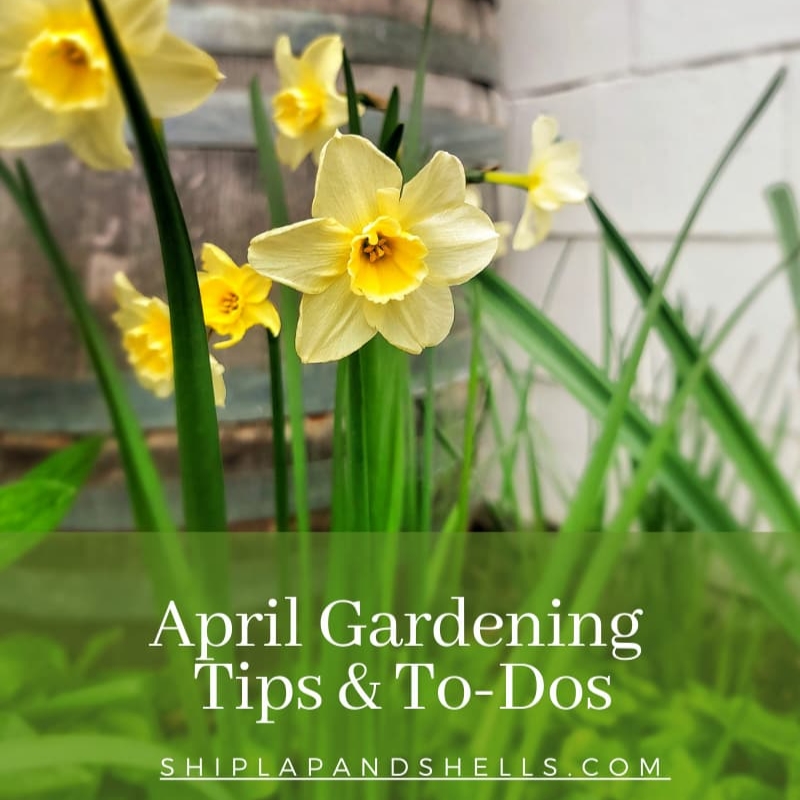
As an Amazon affiliate, I earn from qualifying purchases at no extra cost to you. My blog contains other affiliate links as well for your convenience. Click here to read my privacy policy.
I’m a self-taught hobby gardener, not a Master Gardener. Everything I share with you on my blog is my personal opinion and things that have worked for me.
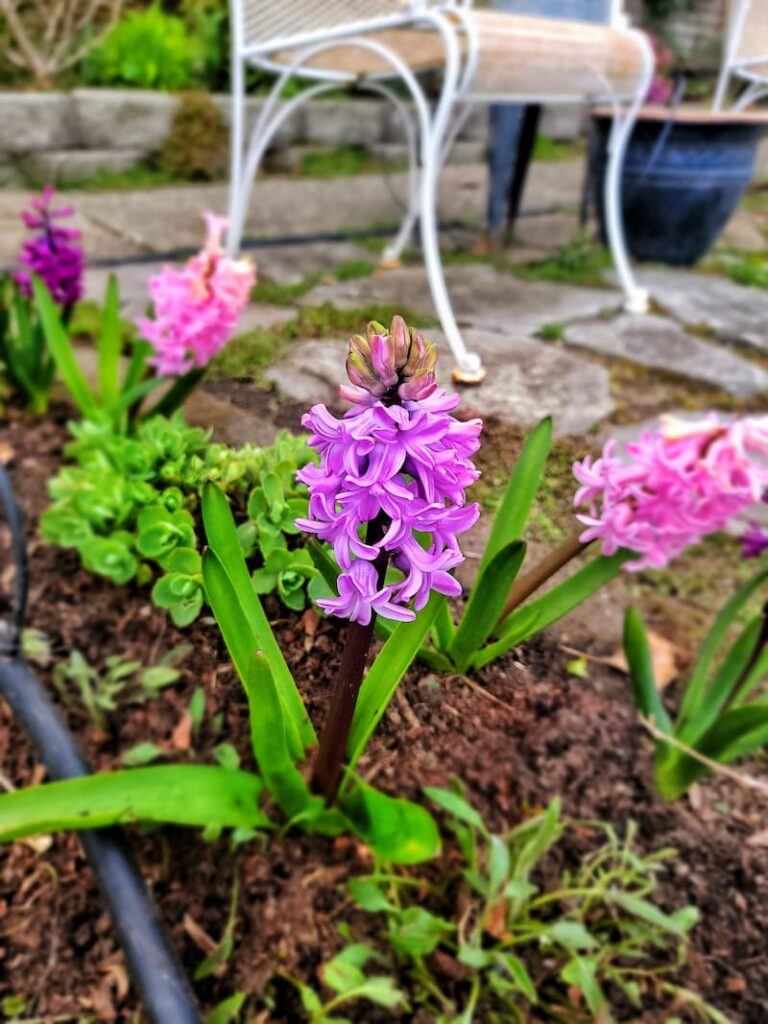
PNW April Gardening To-Dos
My “gardening by month” to-do list for April is based on zone 8b. If you live in a different hardiness zone, confirm the frost dates in your area, and plan accordingly.
There is so much to do now that the garden has awoken from a long winter’s slumber, but it’s such a treat being outdoors again, so it doesn’t seem like work to me.
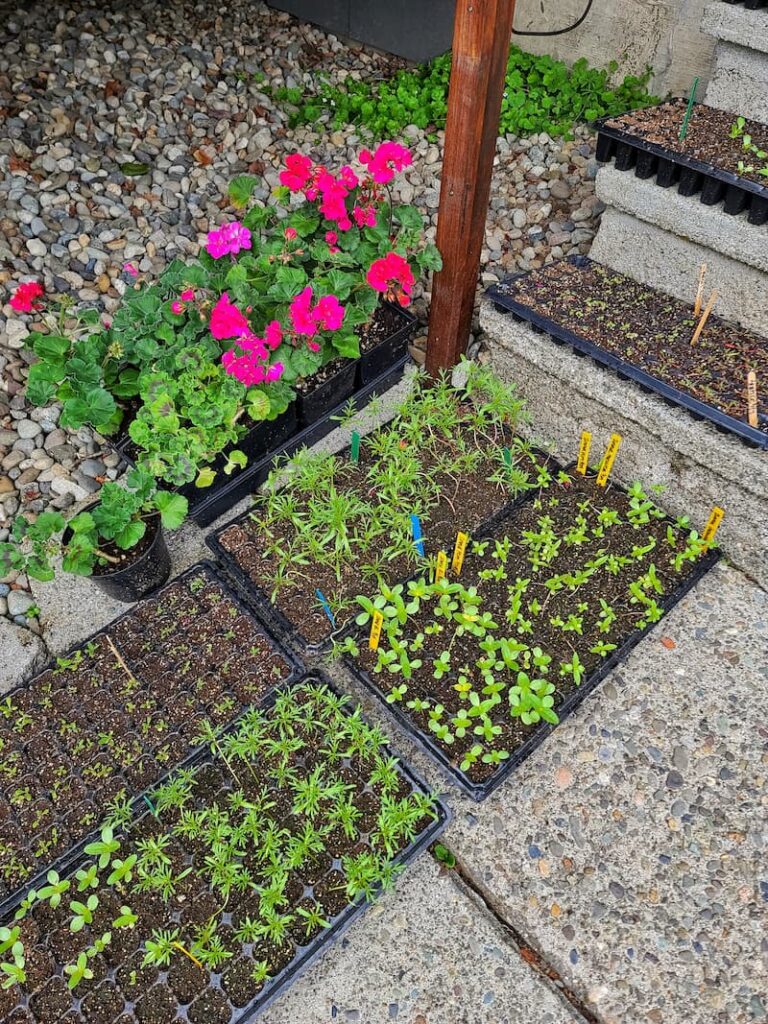
Hardening Off Seedlings and Overwintering Plants
Continue reading my list of April garden chores for you.
If you’ve grown seedlings or overwintered plants indoors or in a greenhouse, they must acclimate to the outdoor conditions before being transplanted into the garden.
This transition period is called hardening off. This is when you gradually expose the plants to outdoor elements such as rain, sun, and wind.
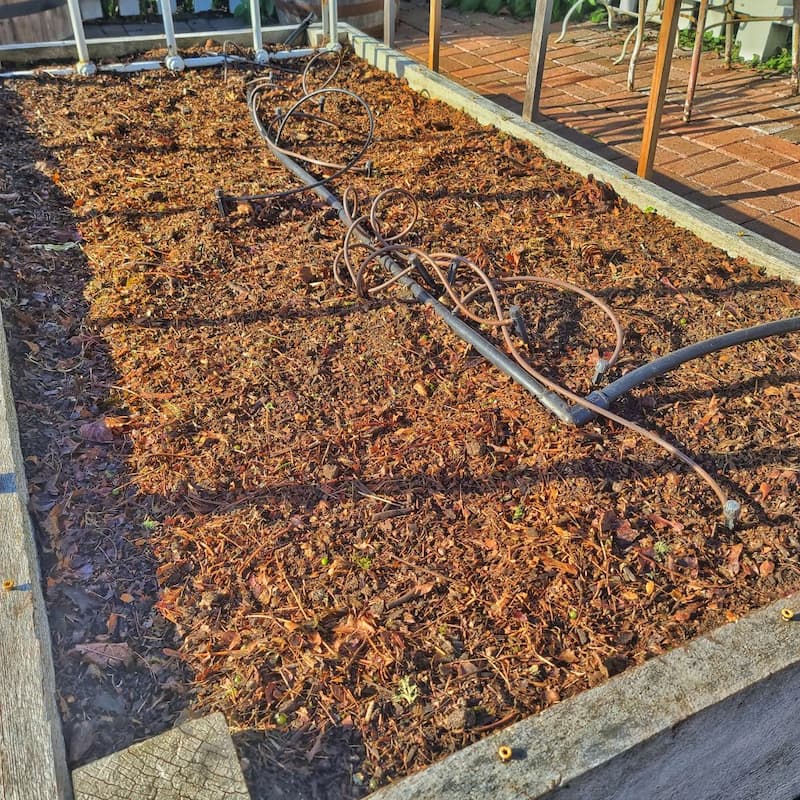
Preparing Garden Beds
Test the Soil in Your Garden Beds
Experts recommend you perform a soil test to check the nutrient and pH level before planting.
This will give you a better understanding of how your soil will perform and what amendments are needed to be added to the ground.
There are soil test options available. You can buy an inexpensive soil test or hire a local garden resource center to test your soil conditions.
Prepare Your Soil
Work the soil when it’s moist to help maintain good air porosity and soil structure.
To determine if the soil is ready to work, squeeze a handful into a tight ball, then break the ball apart with your fingers. If the soil ball readily crumbles in your fingers, the soil is ready to be worked. If the soil stays in a ball, it is still too wet to work.
Soil can be compacted over the winter, so loosening the soil before planting is important. Remove rocks or roots using a shovel or garden fork to turn the soil when it’s dry and crumbly.
Feed Your Soil
Compost has many benefits, such as improving the soil structure, enhancing soil fertility, helping to retain moisture, and providing valuable nutrients needed for healthy plant growth.
Amend your garden beds with 1-3 inches of compost to add nutrients and help retain moisture in the soil this summer.
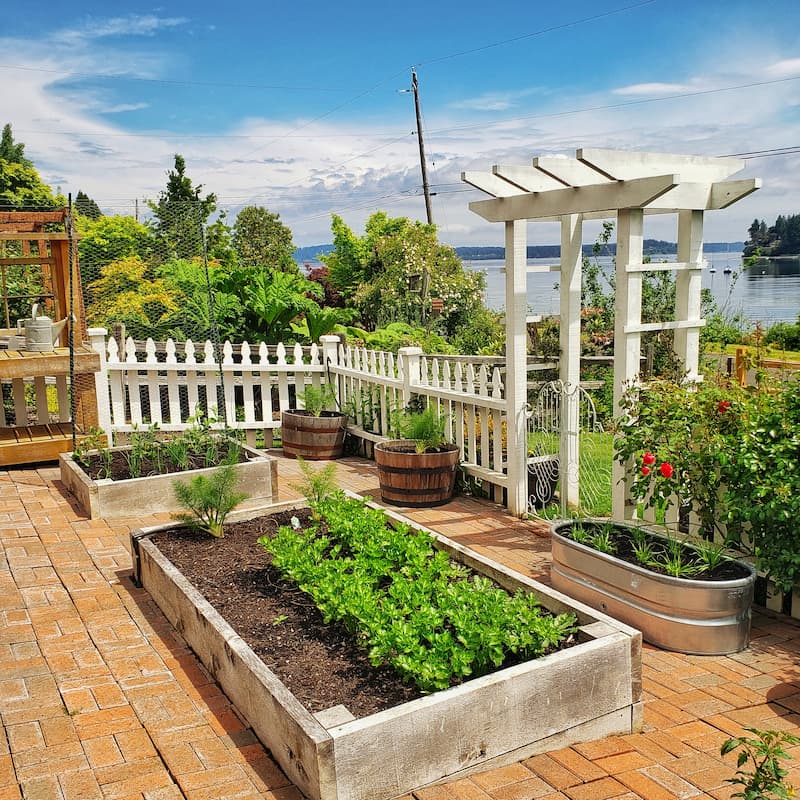
Garden Planting for the Month of April
Edible Plants
April is a great month to plant certain fruits and vegetables in your garden. Here are some edibles you should consider adding to your planting schedule for your Pacific Northwest garden…
Rosemary, chives, oregano, parsley, and mint seedlings can be transplanted outside as soon as the soil is workable.
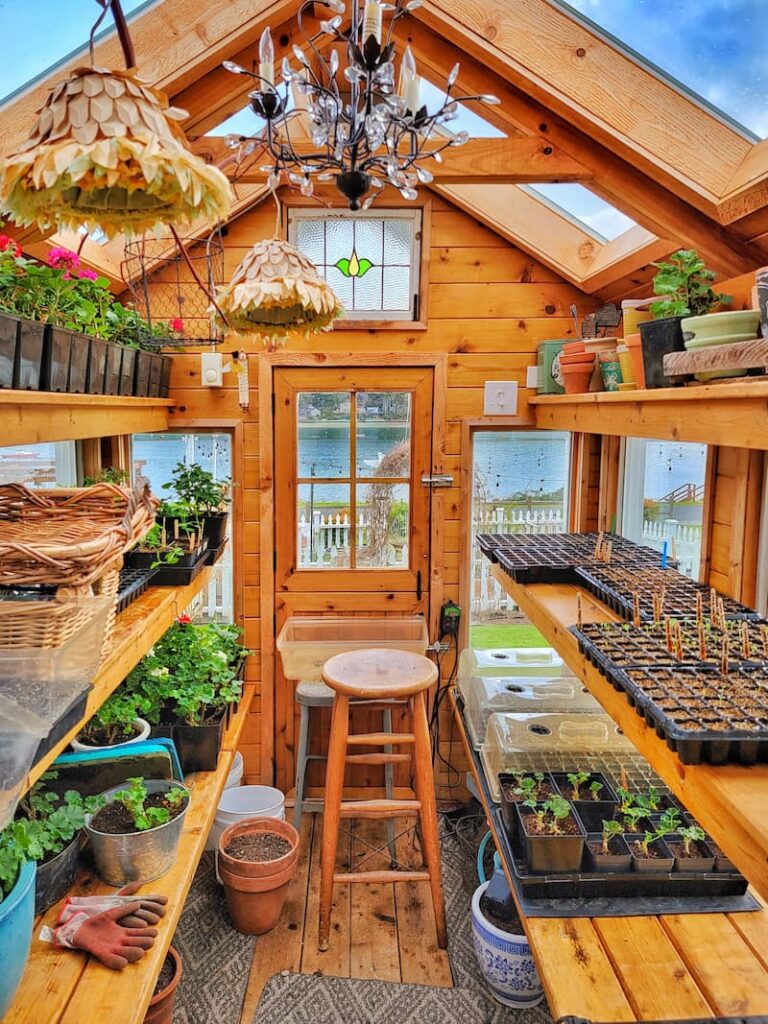
If you’re planning on vegetable gardening, start these veggies indoors:
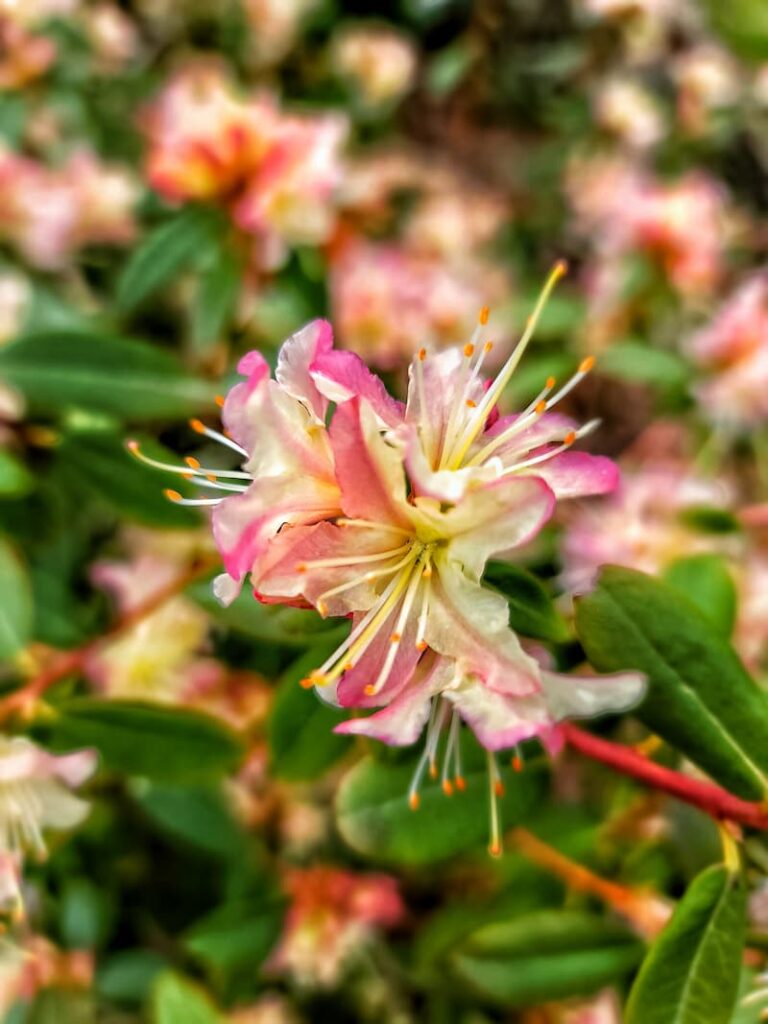
Planting New Perennials
Plant new perennials in the April garden.
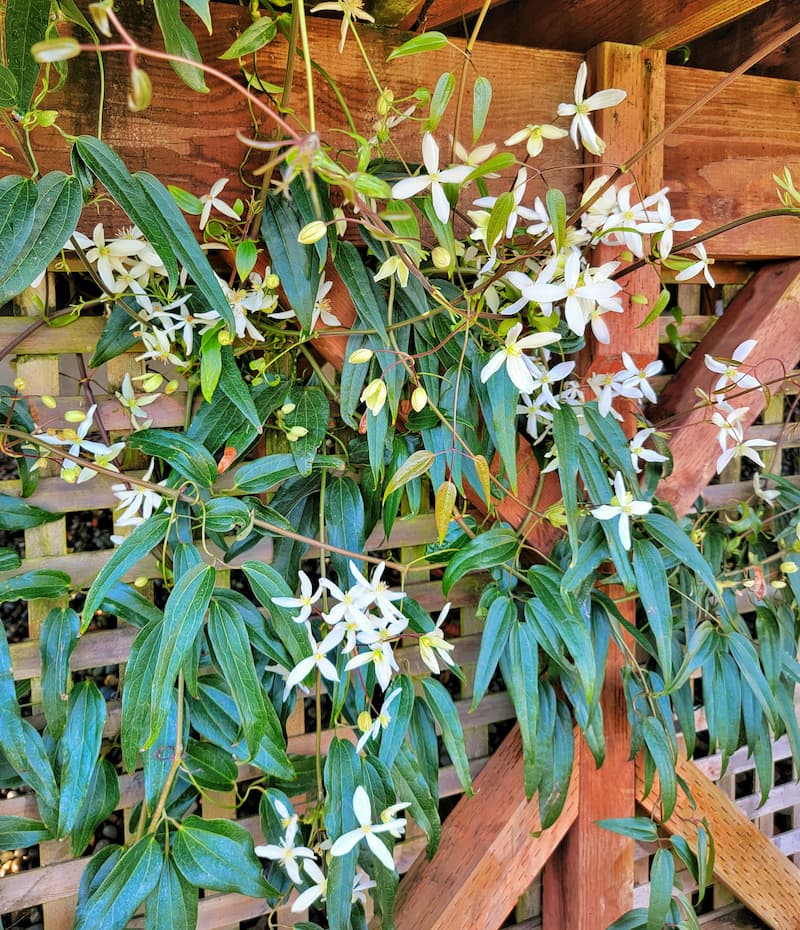
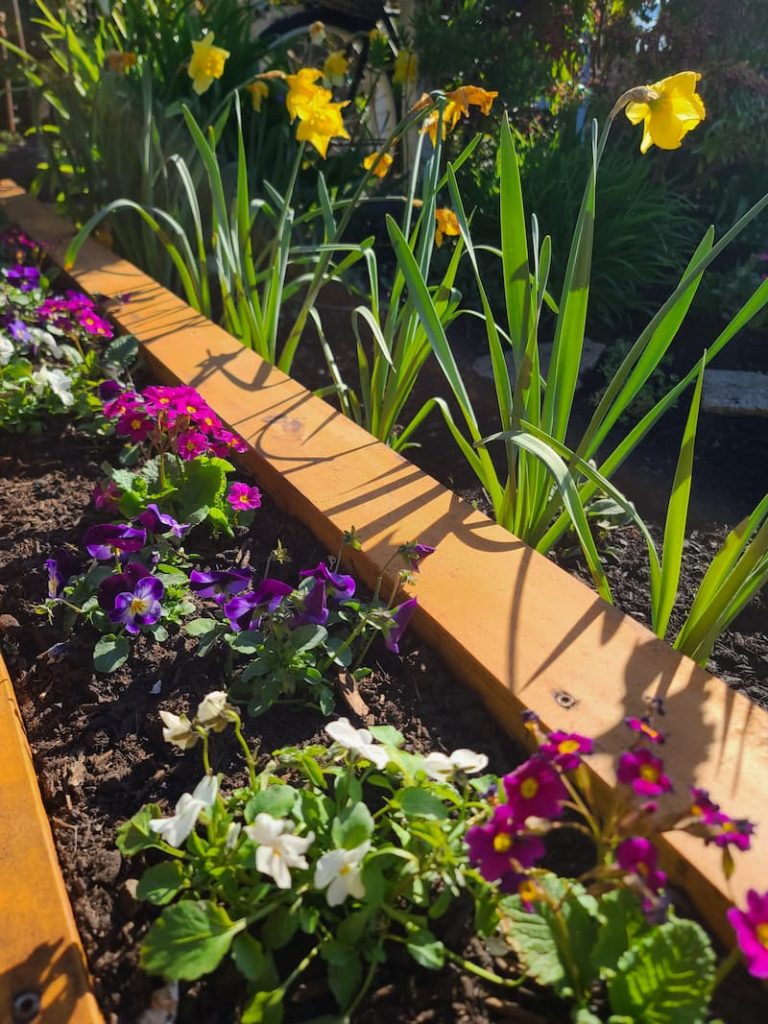
Container Planting
April is the best time to brighten the garden by planting flowers in containers.
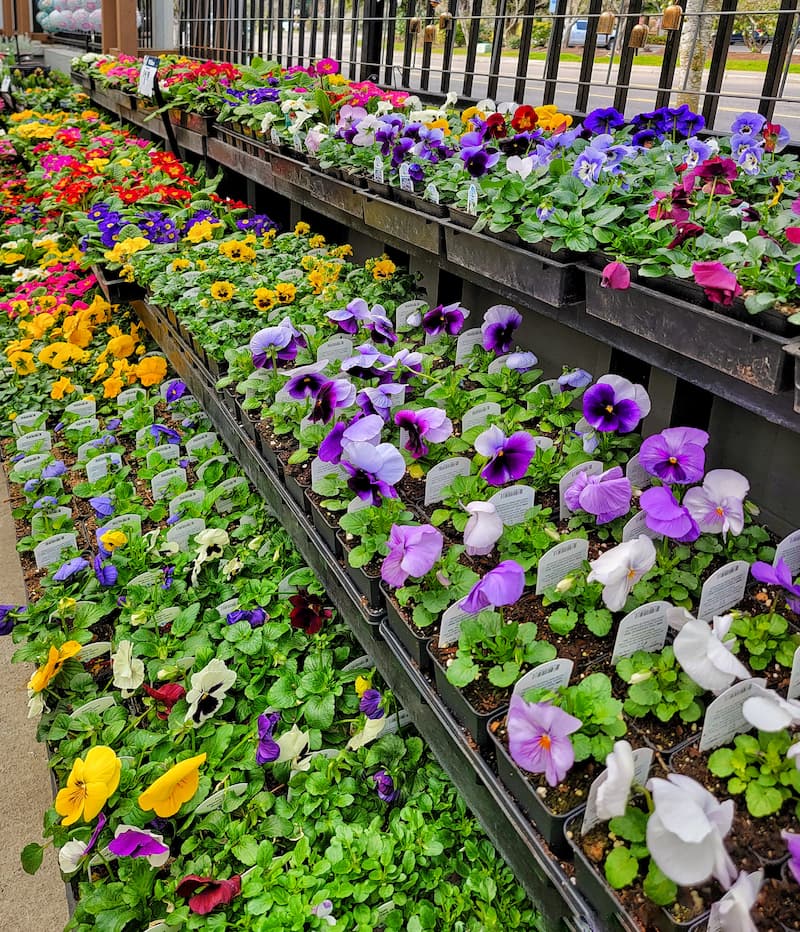
Your local nurseries and garden centers should have a large variety of hardy annuals like pansies, violas, primroses, and spring bulb flowers.
Make sure you plant cold-loving flowers such as pansies, violas, and primroses if you are still experiencing freezing temperatures in April.
One important thing to remember If you buy annual flowers from a nursery or store, ensure they are acclimated to the outdoors before you plant them.
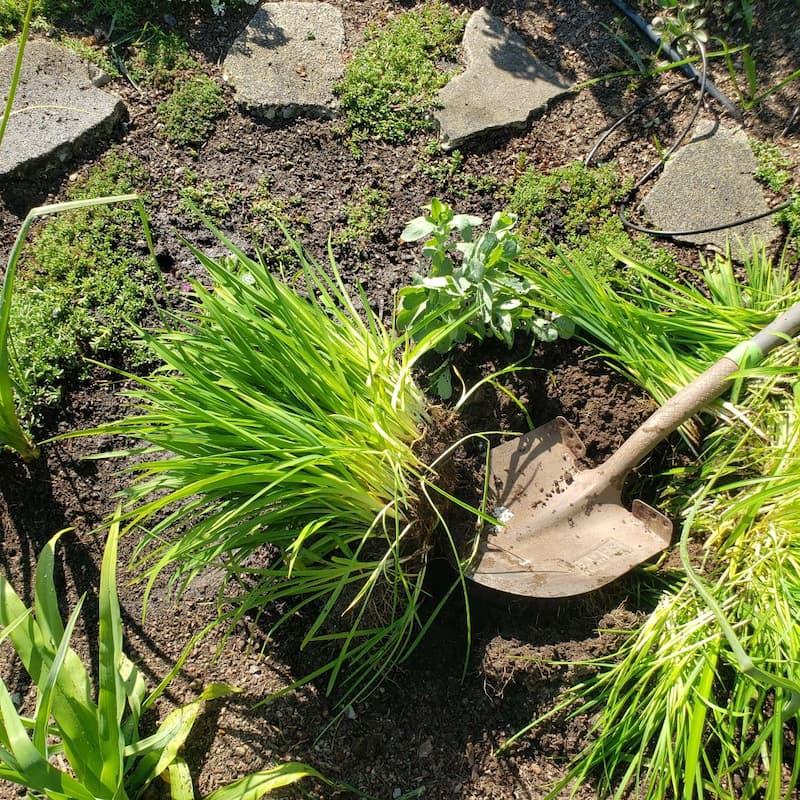
Dividing Perennials and Tubers
When deciding what you’ll be planting in your container, combine plants with similar water and light requirements.
Divide Overgrown Perennials
April is the perfect time to start dividing and transplanting your garden’s summer and fall flowering perennials. These include phlox, black-eyed Susan’s, daylilies, astilbe, Shasta daisies, and sedum. Give your new transplants plenty of water.
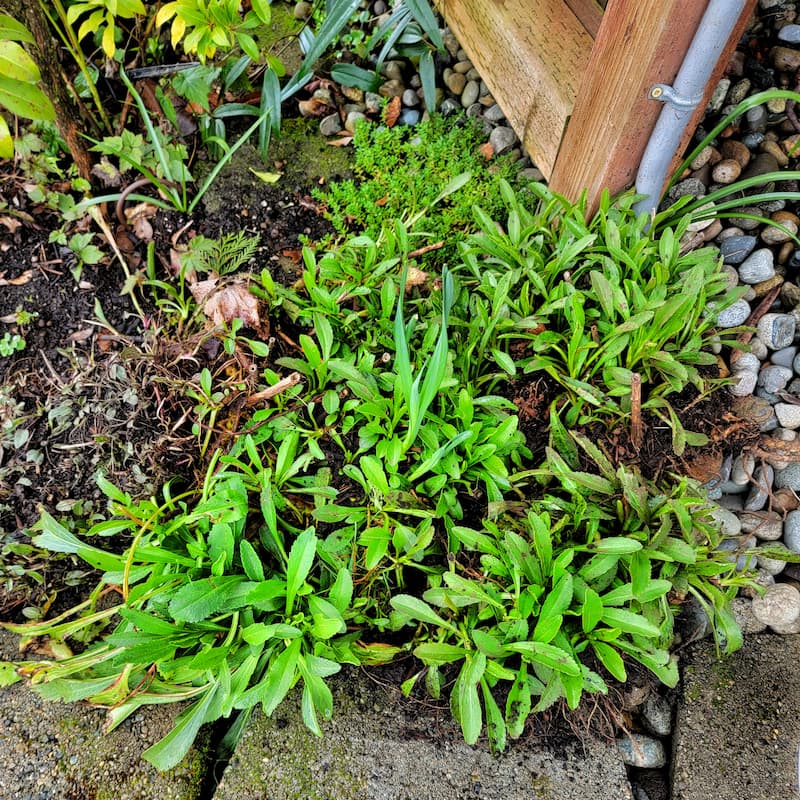
Dividing your perennials is a good way to help keep the plants healthy, prevent crowding, and create more plants for other areas in your garden. If you don’t divide certain plants every 3-4 years, they can die out in the center of the plant, leaving a bare hole.
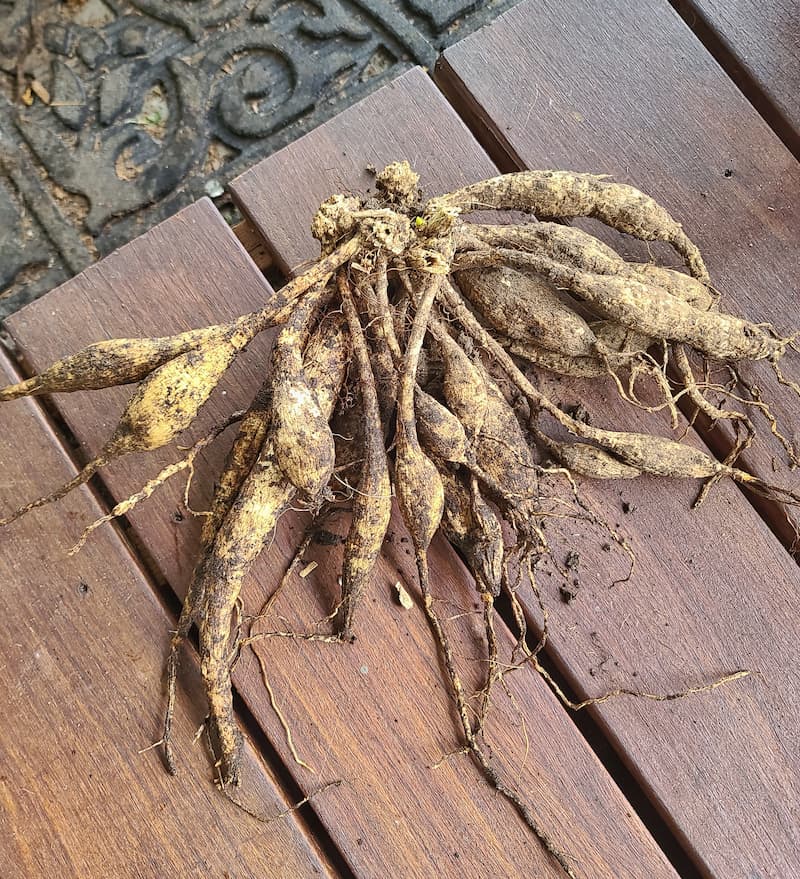
Split Dahlia Tubers
Dahlias grow from tuberous roots and are easily propagated by digging them up and dividing the roots.
This will encourage the plant to produce more blooms and be healthier in the long run by separating the healthy tubers from those diseased or rotted ones.
It’s also a good idea to divide dahlias yearly because of how quickly the tubers grow. They will rot or become too heavy to lift and store if they get too large.
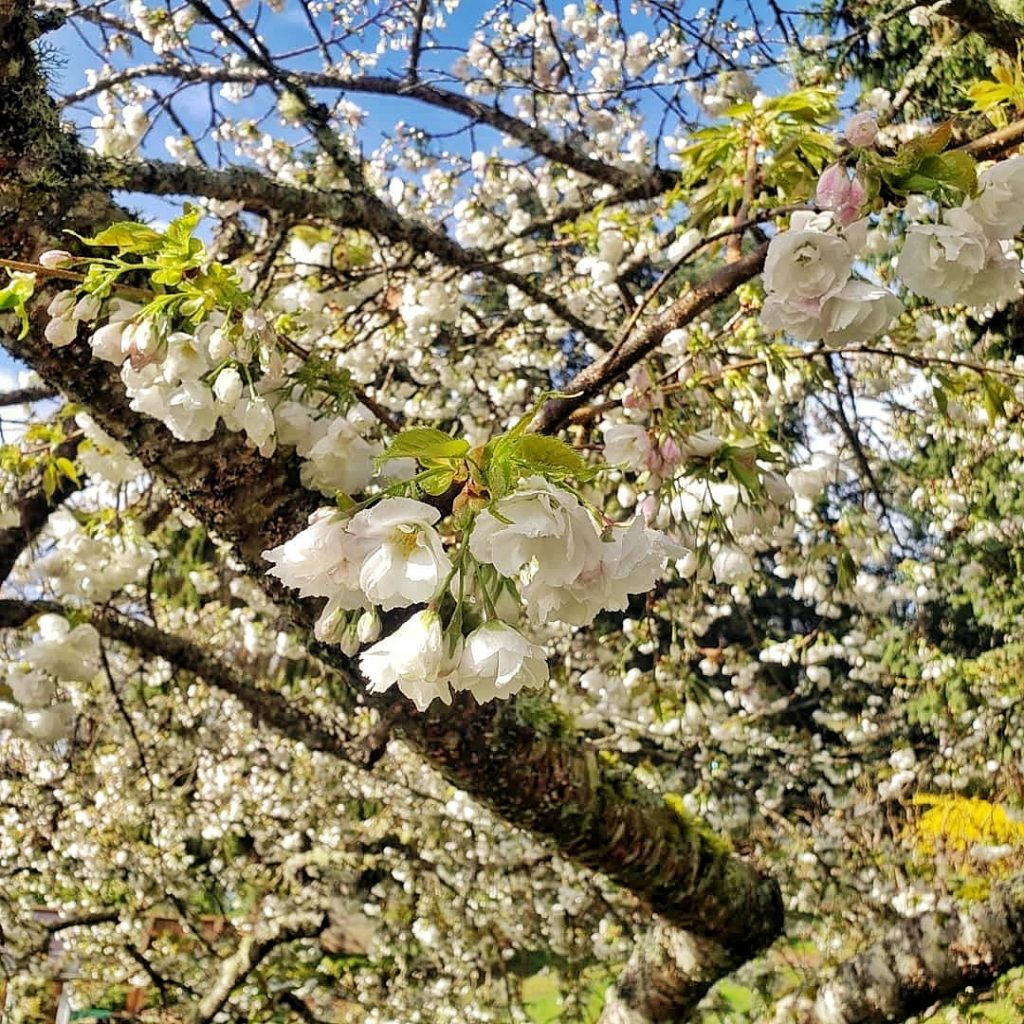
Pruning Your Garden Trees, Shrubs and Plants
Spring-Flowering Shrubs and Trees
Prune your spring-flowering shrubs and fruit trees after they have finished blooming, and the flowers fade. Be sure you do this immediately after flowering so you’re not cutting into next year’s blossoms.
Spent Perennials and Grasses
The dead tops of perennials and grasses should also be pruned back to make room for new spring growth.
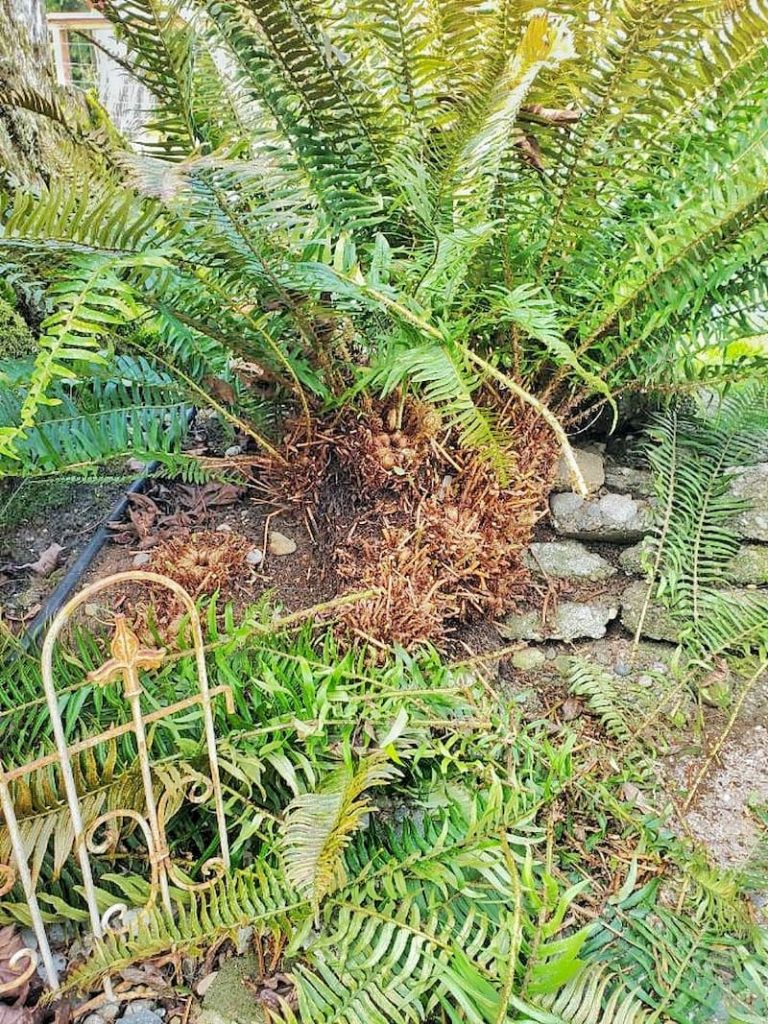
Cutting Back Outdoor Evergreen Ferns
If you haven’t already done so, cut your fern fronds down in April to create a fresh new plant for the rest of the year.

Pest and Weed Control
Slugs and Snails
Spring in the Pacific Northwest means that the slugs are in full force.
I’m noticing that my primroses are being eaten right now because I didn’t put down slug bait in time to protect them.
I use Sluggo in my garden, which is pet and wildlife-safe. However, there are more natural alternatives as well.
Pests
Use a strong stream of water or safer soap products if you already see common pests like aphids in your garden.

Monthly Maintenance in the Garden
Clean Up the Gardens
April is a good time to clean up garden beds.
Pick up fallen leaves and twigs, and prune dead limbs in early spring.
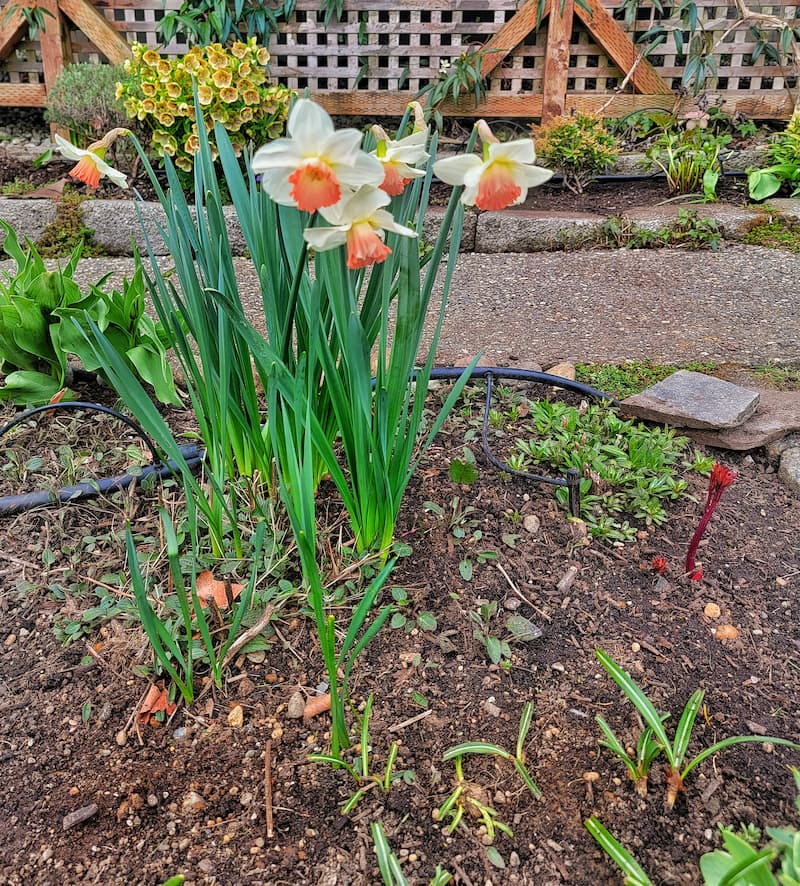
Label Overcrowded Daffodils
Label any clumps of daffodils that are getting too crowded so you can dig them up and separate them this summer. Overcrowding can slow down blooming significantly.
Turn Compost Piles
Turn over your compost pile to help it break down faster.
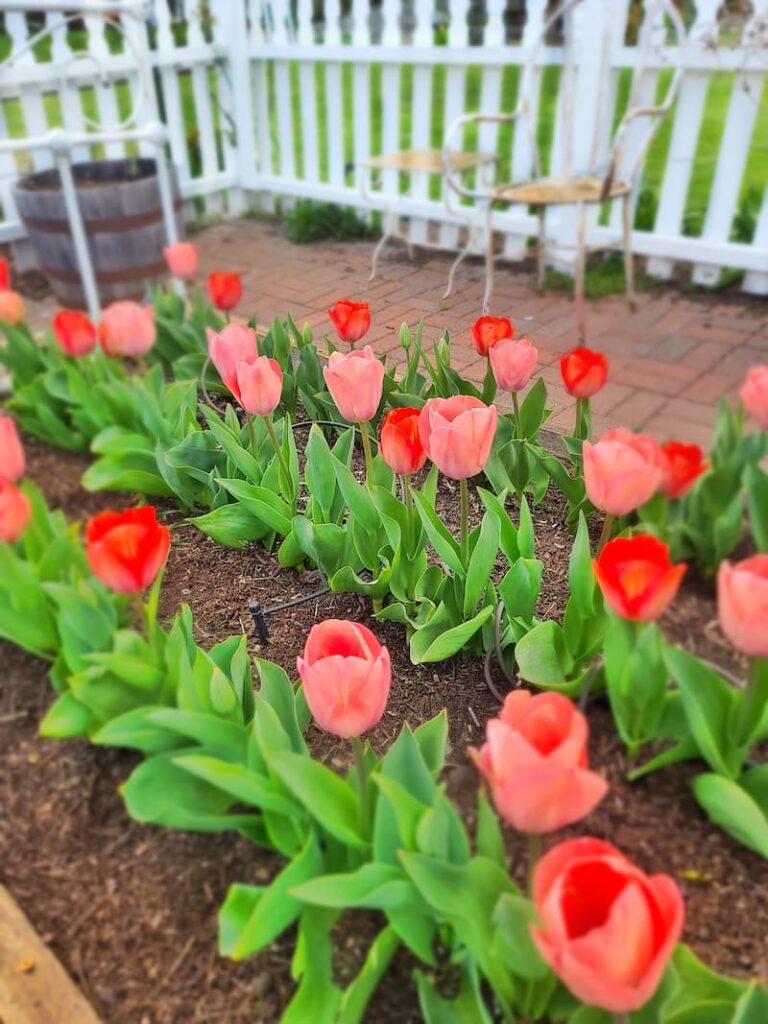
Clean Up Spent Spring Bulbs
When bulb blossoms die, clip the flowering stems as close to the ground as possible. Let the foliage die gradually so they will build food reserves to support next year’s blooms.
Sow or plant hardy annuals in areas where spring bulbs will die back so that they will give you a little help hiding the spent leaves.
Add Lime to the Garden
Sprinkle garden lime in a circle around the base of lime-loving plants to ensure the pH in the garden will stay alkaline enough.
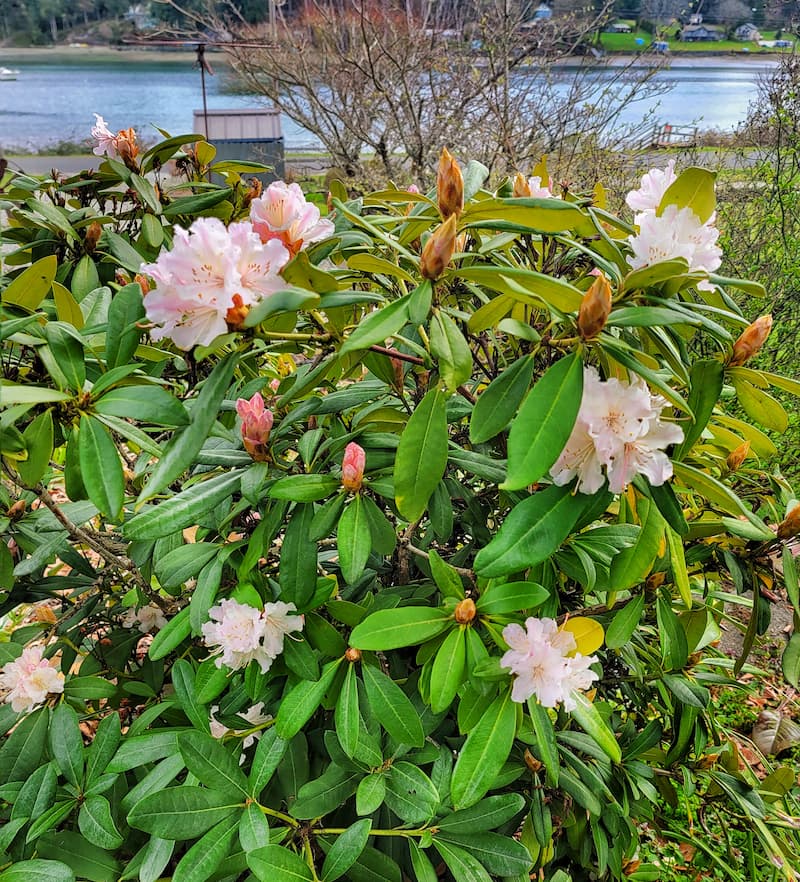
Fertilize Specific Plants
You can fertilize plants in April but hold off on feeding spring-flowering shrubs like azaleas, camellias, and rhododendrons until they have flowered.
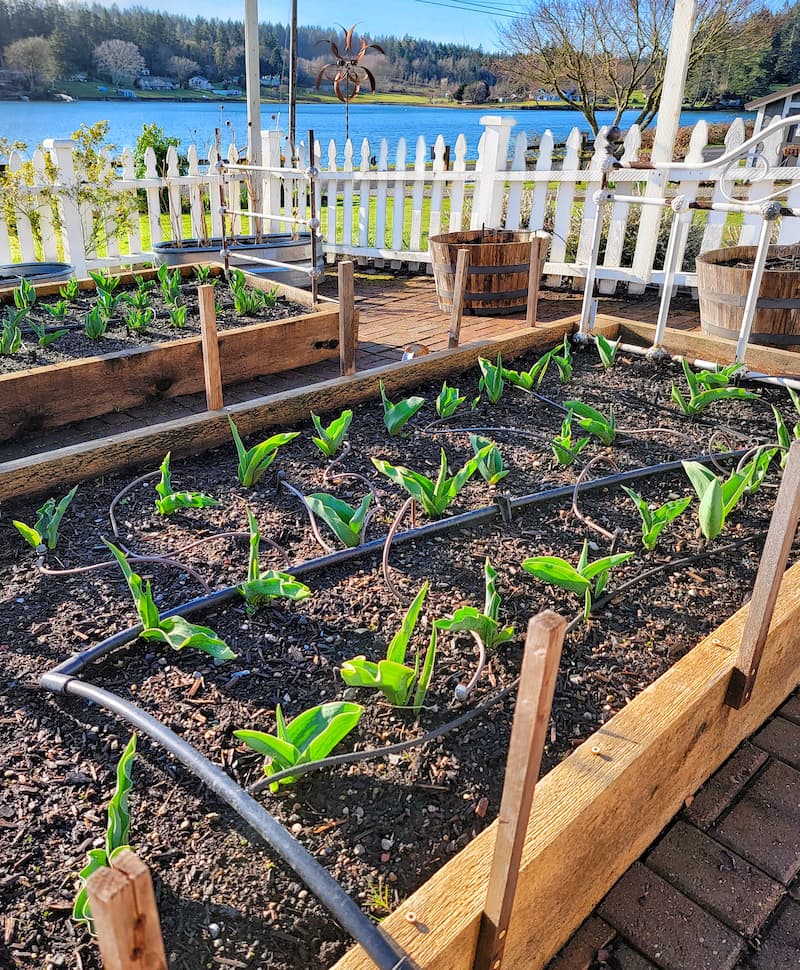
Hopefully, you’ve found some helpful tips to give you a head start on the growing season. April is such a great time in the Pacific Northwest.
The temperatures start warming up, we get more sunny days, and we start seeing more beautiful blooms in our gardens.
If you have any questions or additional suggestions, feel free to share them in the comments below. And be sure to share this blog post link with anyone who may find these gardening tips useful.
Until next time,
Happy April Gardening!

Follow Me for More Inspiration
Shop my Amazon Storefront, my LTK sources, and my favorite home decor, garden, and lifestyle products. When you purchase from one of my links, I earn a small commission which helps me to continue sharing all the content you expect on my blog.
Be sure to follow me on Pinterest, Instagram, Facebook, TikTok and LIKEtoKNOW.it. Do you like gardening? Join my Facebook Gardening Tips & Tricks group.

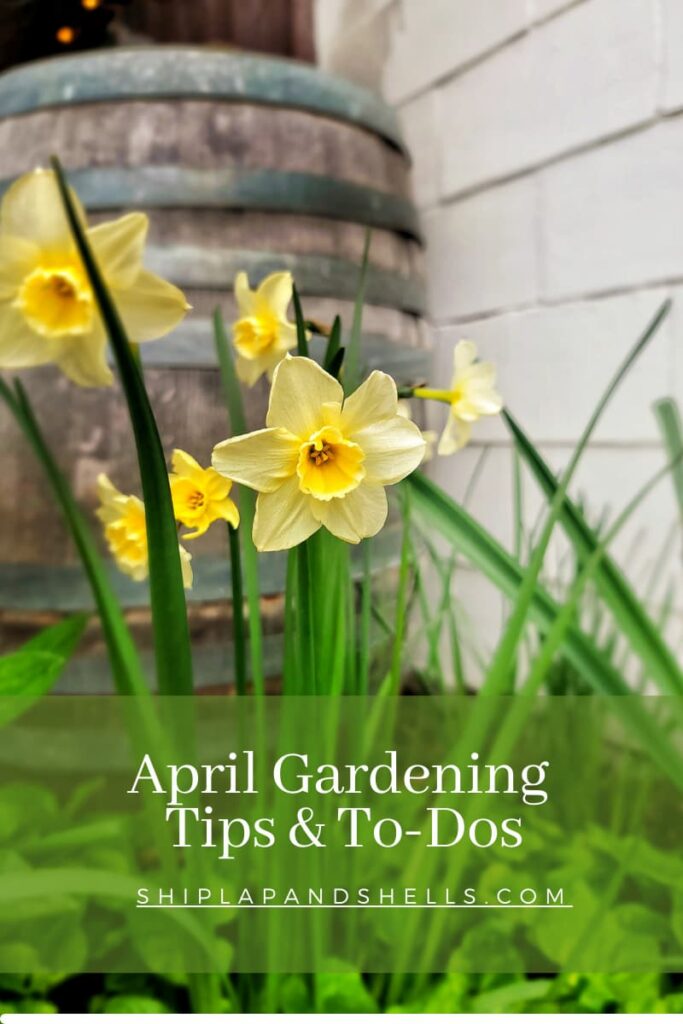

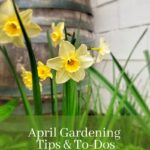
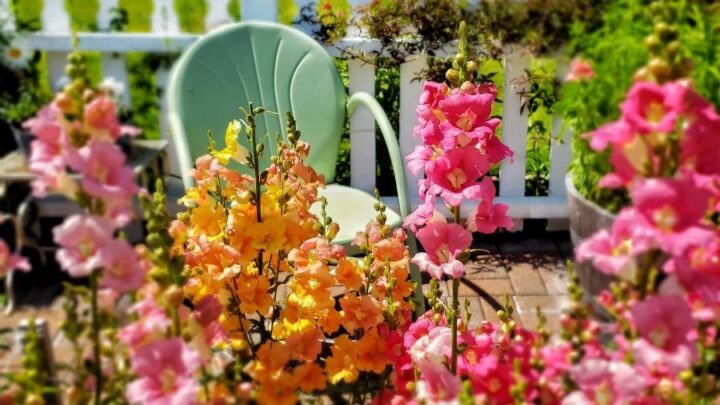
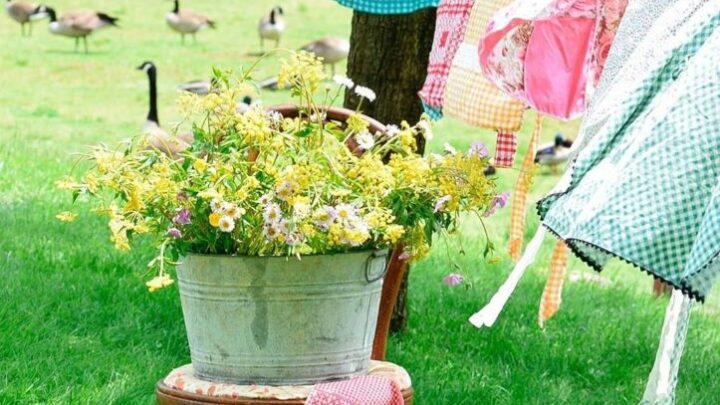
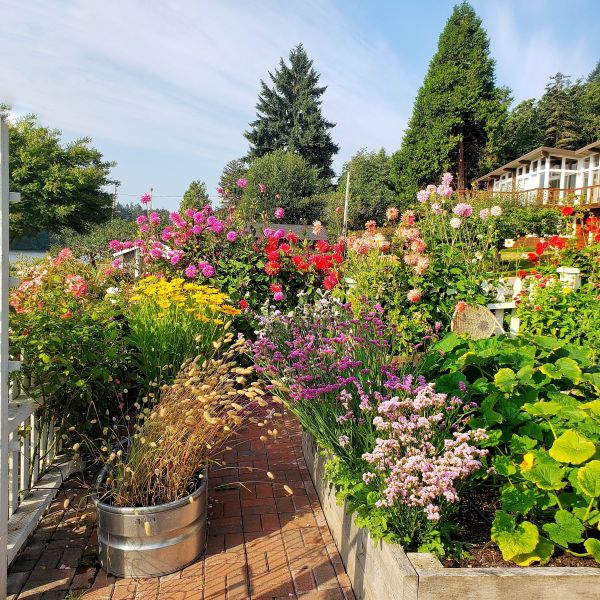
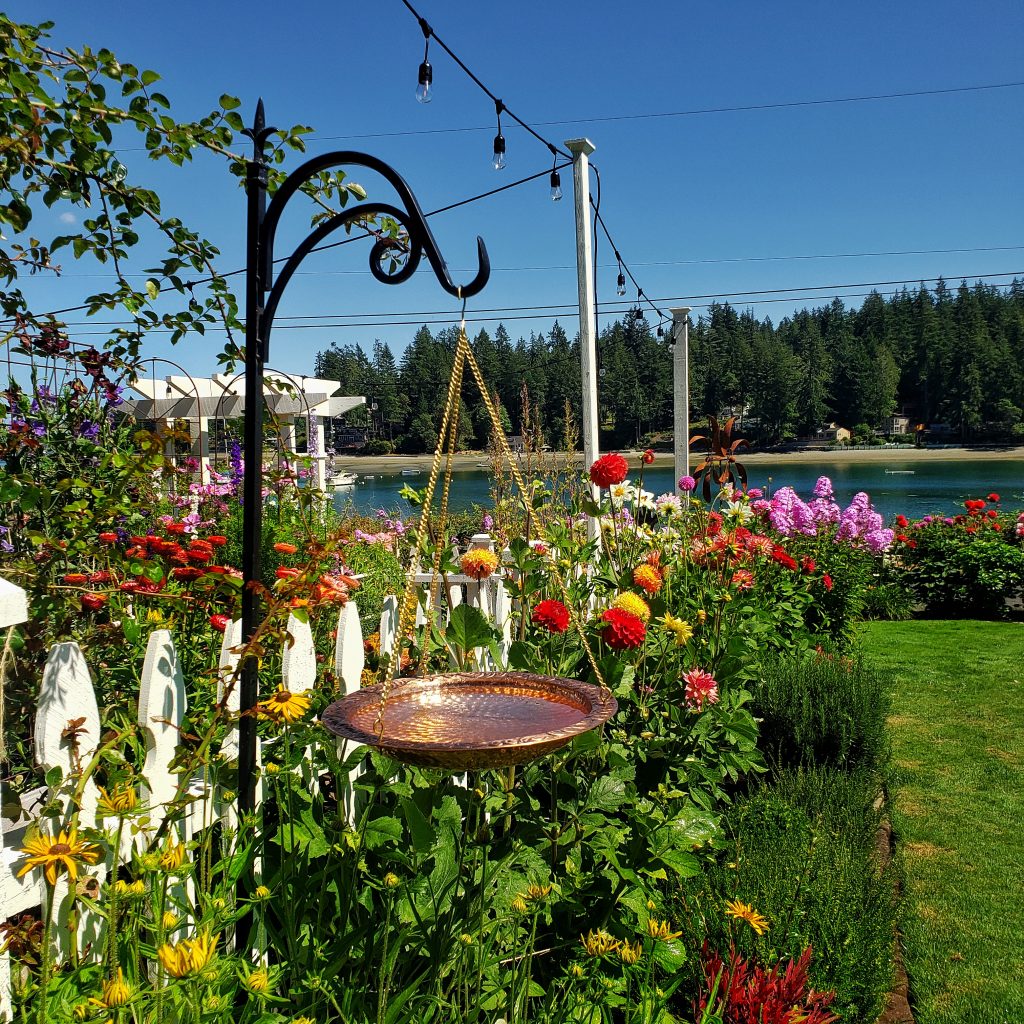
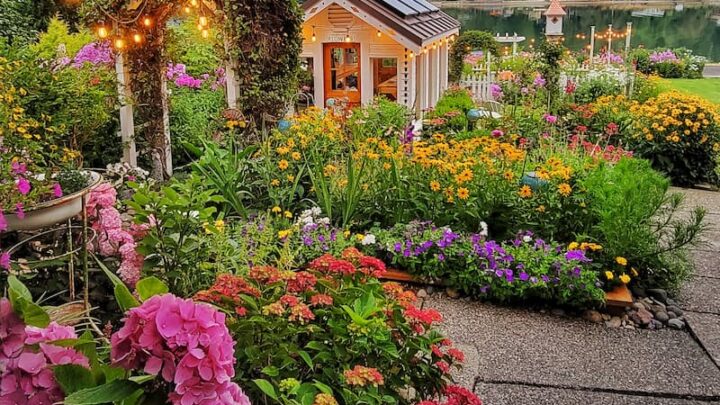
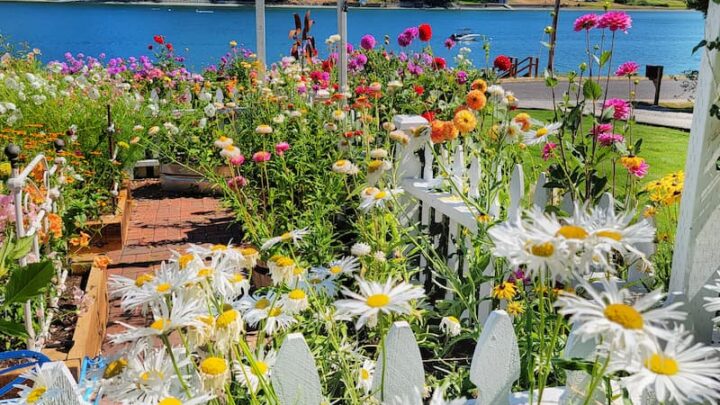
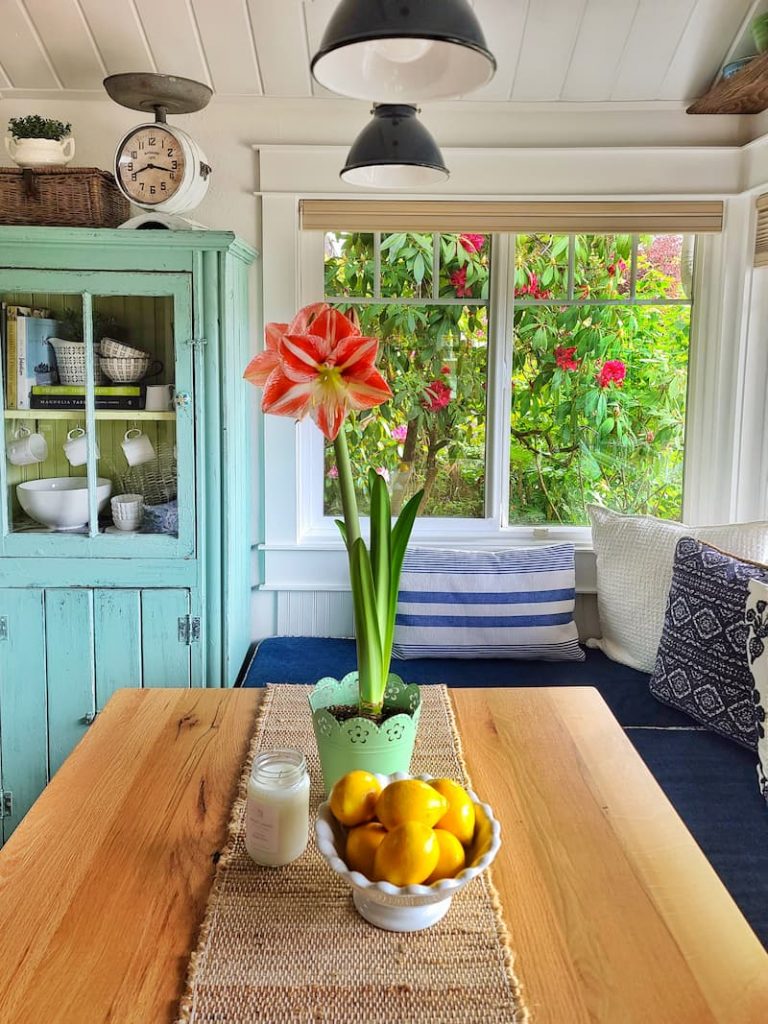
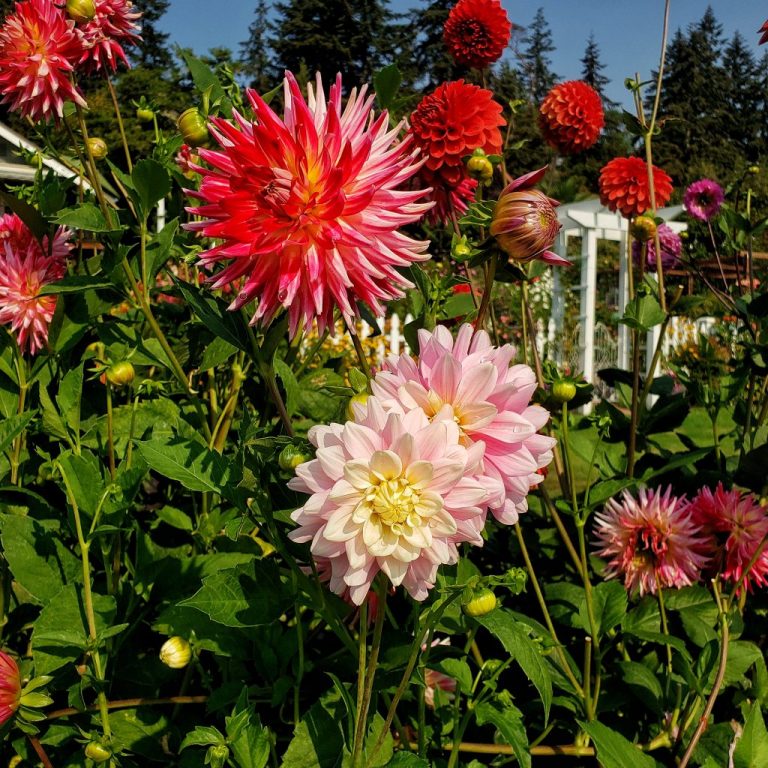
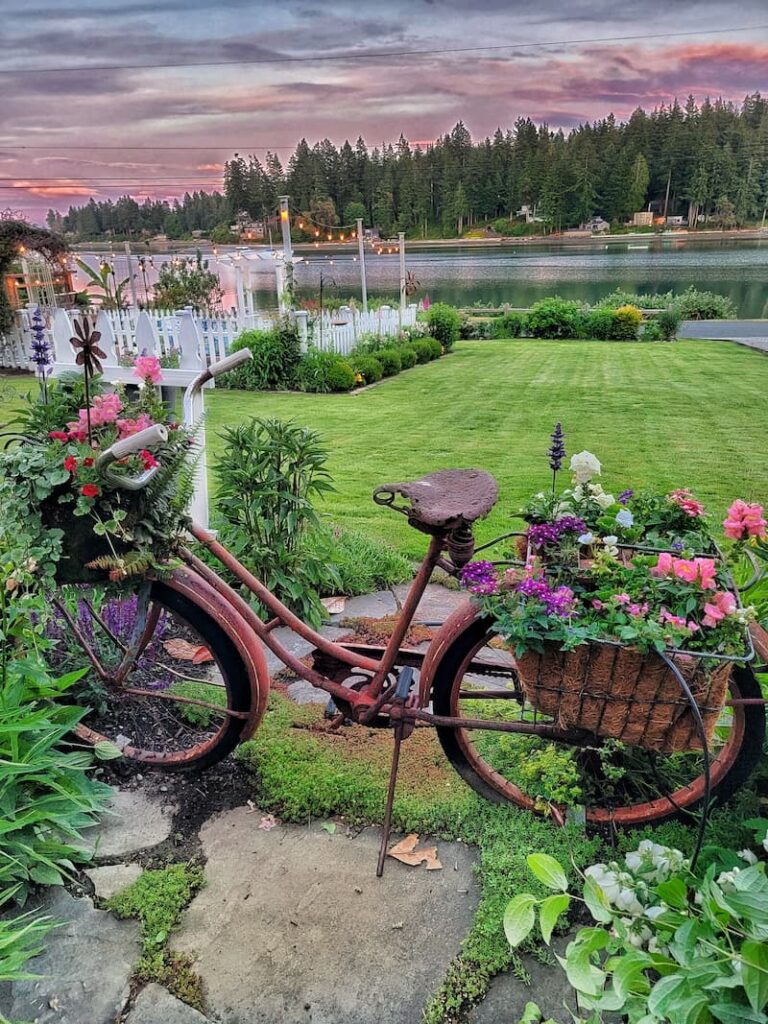
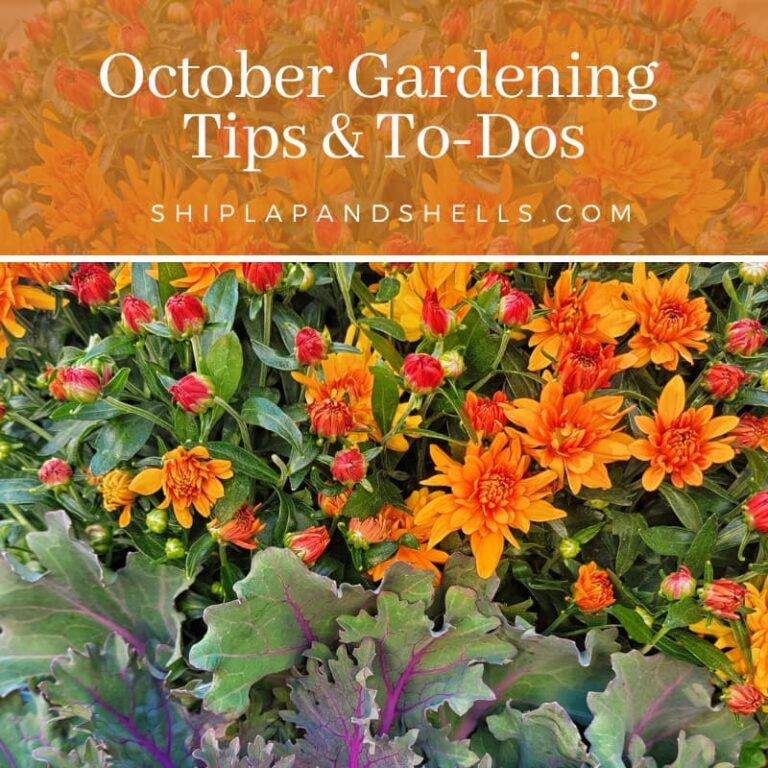
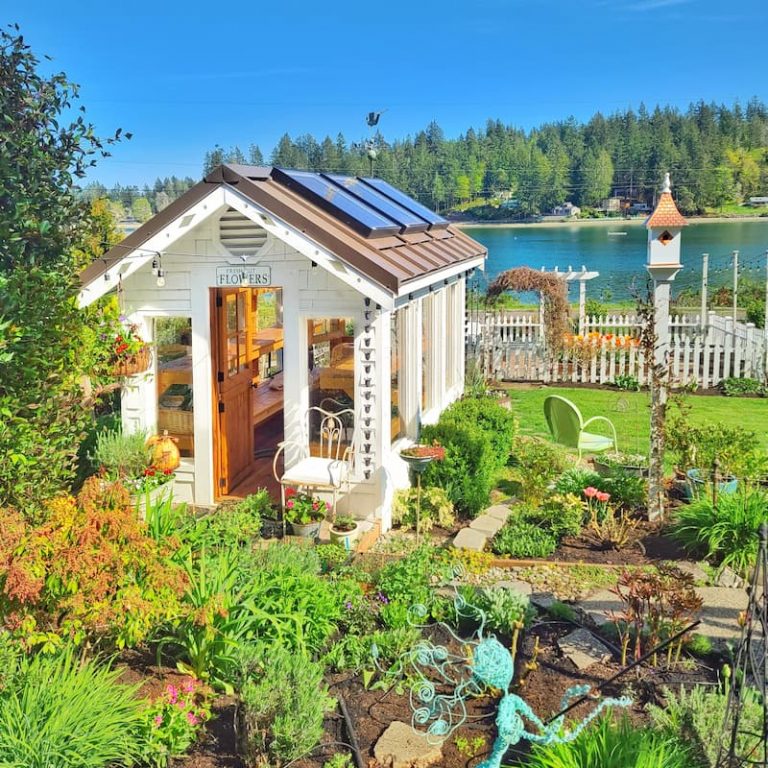

I’m in your same zone so all your suggestions were perfect for my garden! I’m hoping to try separating some of my bulbs this year too. Thanks for all the great tips and the inspiration of your gorgeous garden!
Your gardens already look so good!!!